 Carter Horsley
Carter HorsleyOct 17, 2014
Carter's Review
The Beekman Residences are 68 condominiums in a 51-story tower at 115 Nassau Street adjacent to Temple Court, the 10-story, former 1883 office building at 5 Beekman Street with tall pyramid corners just a few feet east of Park Row at City Hall Park.
The red terra-cotta building on Beekman Street is being converted to a 287-room hotel with a very large, skylit atrium with very decorative and ornate railings and arched arcades that is very reminiscent of one of the major scenes in “Bladerunner,” the famous movie that was partially shot in the famous Bradley Building in downtown Los Angeles.
The new, adjacent tower is “a dynamic reinterpretation of the cast-iron elevation of The Beekman Atrium; exposed and engraved concrete columns create a muscular elevation that celebrates the structure of the tower,” according to Randy Gerner of Gerner, Kronick + Valcarcel the architect for the project. “Above all,” he continued on the project’s website, “the tower’s dual crowns are a tribute to the restored Temple Court turrets.”
The thin tower appears to be white in a rendering and its pyramid towers appear to be very thin, almost transparent structures.
Gerner, Kronick + Valcarel is the architect for the project that is being developed by GFI Development Company, whose other projects in New York include the Ace and NoMad hotels, and GB Lodging, which was founded in 2011 by Allen Gross, founder and president of GFI Capital Resources Group, an affiliate of GFI Development, and Bruce Blum.
Thomas Juul-Hansen is the interior designer for the residential tower in which apartments start at 172 feet up and Martin Brudnizki is the interior designer for the Beekman Hotel.
It is scheduled to open in 2015.
Bottom Line
Almost spooky, this phantasmagoric place oozes with wonderful ghosts evoking a great sense of civic grand history. The tower apartments can avail themselves of the hotel’s many services and amenities and also have awesome vistas of the Woolworth Tower, City Hall, the glories of Lower Manhattan, although some might be block by a redevelopment of some of J & R’s low-rise retail properties on Park Row.
Description
The distinctive twin pyramid top of the original building is thematically echoed in the twin peaks of the adjoining tower, whose body is divided by cross-bracing that is related to some of the original building’s engineering aesthetics.
In the famous atrium space of the original building, Mr. Brudnizki said on the project’s website that “we wanted to create a progression through space that evolves through texture and color.” “We are using timber paneling,” he continued, “that is going to look like it’s been there forever, so it’s going to be heavily antiqued and distressed, and it will be paired with a beautiful black and white marble mosaic floor. But as you move through those spaces, into the concierge area, the space looks like we found it. The walls weren’t even touched; the cobwebs would still be there. This effect continues in the atrium, which is not going to be a perfectly finished architectural space. I’s going to have flaws in it, intentionally.”
Amenities
The building has a 24-hour concierge, a doorman, a landscaped residents terrace, a fitness center, hotel housekeeping, a private dining room, a media room, a rooftop park, a trellis lounge and room service by Tom Collichio and priority reservations for restaurants in the building operated by Mr. Collichio and Keith McNally.
Apartments
Apartment A on the 40th through the 49th floors are two-bedroom units with 7-foot-long entry foyers that lead to a 29-foot-long living/dining rooms with open kitchens with islands.
Apartment B on the 40th through the 49th floors are two bedroom units with 7-foot-long entry foyers that leads to a 28-foot-long living/dining rooms with open kitchens with islands.
Apartment B on the 27th through the 31st floors are three-bedroom units with 8-foot-long entry foyers that leads to 28-foot-long living/dining rooms with open kitchens with islands.
Apartment A on the 19th through the 26th floors are two-bedroom units with 9-foot-long entry foyers that lead to 29-foot-long living/dining rooms with open kitchens with island.
Apartment B on the 17th through the 26th floors are one-bedroom units with 11-foot-long entry foyers that lead to 20-foot-long living/dining rooms with open kitchens with islands.
History
According to the project’s website, this location “hosted a succession of creative and academic milestones.” “Originally the home to the Chapel Street Theater, it was there that Shakespeare’s Hamlet was first presented in New York on November 26, 1791,” it noted, adding that “in the wake of destruction of Chapel Street, by 1798, the heart of New York’s theater district re-emerged with the establishment of John Jacob Astor and John Beekman’s (the street’s namesake) Park Theater which was the city’s preeminent theater for nearly fifty years. By the 1830s, the site also housed one of Manhattan’s key educational establishments, Clinton Hall (named after former New York Governor Dewitt Clinton), which was the grand repository of the literary collection of the Mercantile Library Association.”
New York University, it continued, had its inaugural classes at Clinton Hall “launching in 1832.”
Eugene Kelly built Temple Court in 1883.
“One of the first high-rises in New York,” the website continued, “Kelly sought out to create the city’s most remarkable building. Built out of granite, red Philadelphia brick and tan Dorchester stone, it was designed by the architect James M. Farnworth in the traditional Queen Anne style in the image of a building in London of the same name….Surrounded by delicate Victorian wrought iron rails and balustrades ornamented with flowers, dragons and sunbursts, the atrium’s extraordinary design not only attracted the attorneys’ offfices who rented the space when it opened its doors, but soon lured some of the city’s most creative businesses, including publishers, press agents, advertising agencies and architects.”
According to an article by S. Jhoanna Robledo in the September 8, 2014 edition of New York magazine, early tenants in the new building included the National Rifle Association.
In 1893, she added, there was a fire in the building and in 1911 a 19-year-old waiter jumps from the 9th floor after he was fired from the building’s cafeteria and later tenants included the War Resistors League and the Citizen’s Union.
In 1998, it was named an individual landmark y the New York City Landmarks Preservation Commission.
In 2001, it was vacated by its last tenant, Joseph Pell Lombardi, the leading preservation and conversion architect in Lower Manhattan, and the building was closed.
In 2008, it is acquired by Joseph Chetrit and Charles Dayan as the economy crashes and in 2012 GFI development bought it and the adjacent lot for $86 million.
In 2014, Tom Collichio and Keith McNally are reportedly considering opening restaurants in the building.
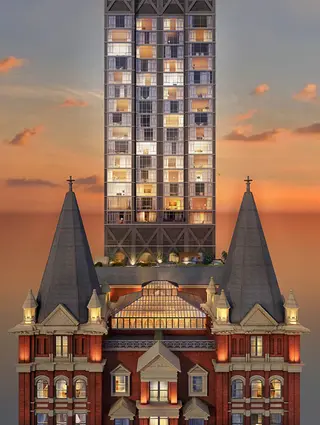
- Condo built in 2016
- 5 apartments currently for sale ($1.25M to $2.38M)
- Located in Financial District
- 68 total apartments 68 total apartments
- 10 recent sales ($1.1M to $3.1M)
- Doorman
- Pets Allowed
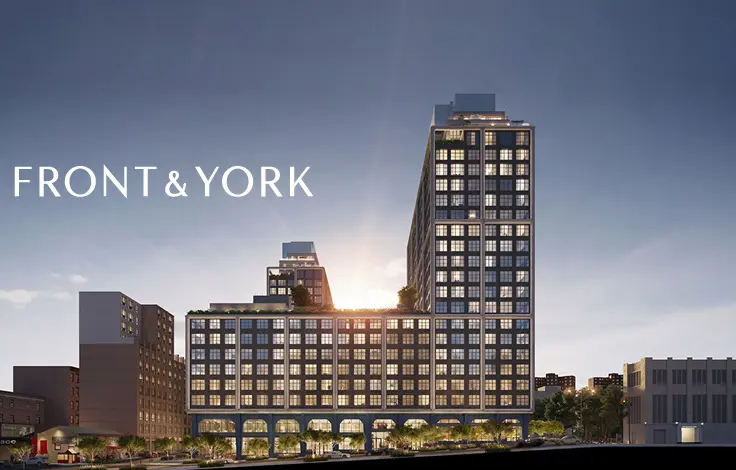
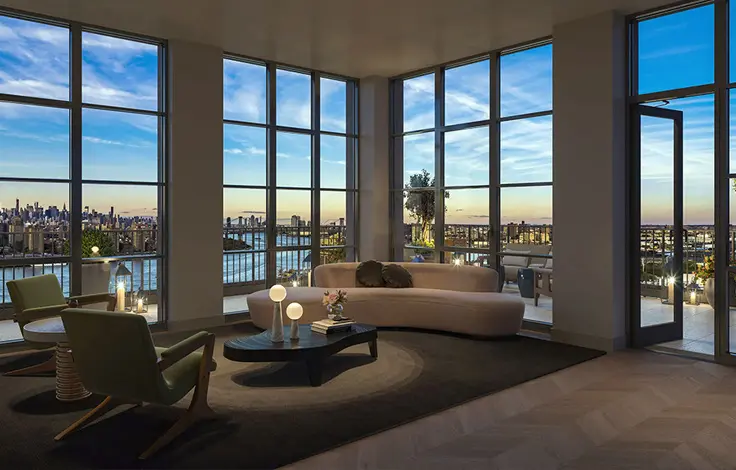

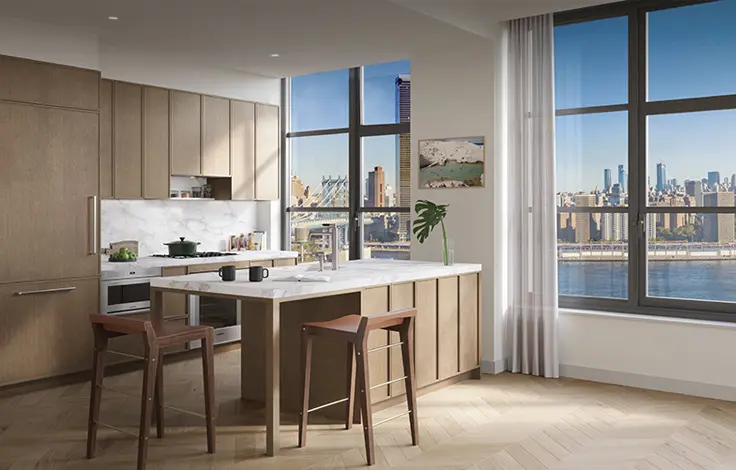
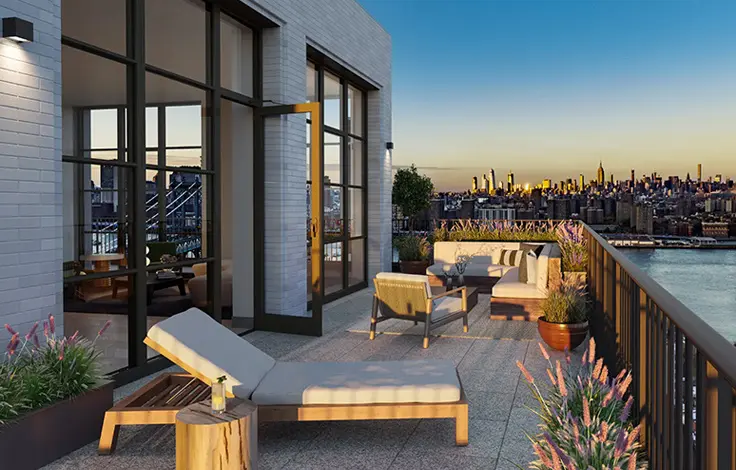
 6sqft delivers the latest on real estate, architecture, and design, straight from New York City.
6sqft delivers the latest on real estate, architecture, and design, straight from New York City.
